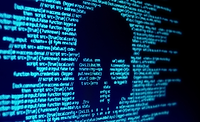How to guard against the holiday cyberattack surge

Image via Unsplash
Historical trends indicate a marked increase in cyberattacks during the holiday season. Cybercriminals take advantage of heightened online activity and digital transactions, using this busy period to target consumers with precision. However, it’s not just individual shoppers who are at risk — enterprises are equally vulnerable. In fact, recent research shows a staggering 550% surge in unique threats during this time of year.
Organizations become prime targets for a wide array of cyberattacks as the holidays approach. Among the most common are sophisticated phishing campaigns, where attackers impersonate trusted brands to deceive employees, as well as social engineering tactics designed to exploit vulnerabilities within corporate networks. Skimming attacks, which seek to harvest sensitive payment data from businesses, remain prevalent. Meanwhile, ransomware continues to be a significant threat, with reports indicating a 30% rise in the average number of ransomware incidents during the holidays compared to other months.
Regardless of the attack method, the goal for cybercriminals is the same year-over-year: to disrupt operations and cause significant financial and reputational damage during this critical sales period.
When history repeats itself
If it is known cyberattacks spike during the holidays, why do they remain so effective? A significant reason is many organizations operate with reduced staffing — especially during the period between Christmas and New Year’s Day — due to widespread time-off requests. With fewer employees actively monitoring for security threats, cybercriminals have an easier time executing attacks unnoticed.
Several other factors contribute as well. End-of-year fatigue can lead to a decline in employees’ diligence around cybersecurity, as exhaustion sets in and focus wanes. Additionally, the rush to meet deadlines and finalize projects before the year’s end can lead to cutting corners on security protocols. Many companies also hire temporary or contract workers who may not be fully familiar with the organization’s cybersecurity best practices, policies and procedures. Together, these conditions create an environment ripe for exploitation by cybercriminals.
How to change the path in 2024
The good news is if cybercriminals continue to rely on the same proven tactics year after year, organizations have the opportunity to develop targeted cybersecurity measures to course correct and defend against them more effectively. Best practices to consider include:
Offer cybersecurity awareness, education and training
This is one of the most crucial steps to enhance security, as humans have always been, and continue to be, the weakest link in cybersecurity defenses. Providing training programs tailored to holiday-specific threats can help employees recognize potential risks and respond appropriately to stay protected. It’s equally essential to conduct awareness and training sessions for temporary and contract workers, ensuring they are fully informed about the organization’s cybersecurity policies and best practices.
Balance business goals with security
While it may be tempting to rush project completions before the year’s end, compromising on security can lead to serious repercussions. It’s critical for leadership to emphasize the importance of prioritizing secure execution, even if it requires postponing deployments and system changes until after the new year.
Prioritize patching and vulnerability management programs
Regularly updating software and following strong security practices for device configurations remain some of the most effective defenses against attacks. Staffing may be limited during the holiday season, but these areas must not be neglected. Maintain the same diligence in device configuration, patching and system scanning as done throughout the rest of the year.
Manage access controls
Ensure temporary and contract workers have only the minimum access necessary to perform their tasks. Additionally, with the year-end being a common time for role transitions and employee departures, it’s crucial to review user accounts to confirm access levels are still appropriate.
Emphasize the importance of strong passwords
Enforce strong and unique passwords across all accounts. The strongest passwords are 12 or more characters, including a mix of lowercase and uppercase letters, numbers and special symbols. Remind employees to use a unique password for each account, and encourage the use of password managers, when applicable.
Use multi-factor authentication (MFA) when possible
MFA is a method of authenticating into an account that requires users to present at least two pieces of evidence to prove their identity — something they know (e.g., a password) as well as something they have (e.g., an authentication code via text or email) or something they are (e.g., facial recognition or a fingerprint scan). Pairing a strong password with MFA will make it much more difficult for cybercriminals to compromise accounts.
Encourage cyber vigilance for employees working remotely
In today’s remote and hybrid work setups, actions taken at home — like visiting a fraudulent shopping website, clicking on a too-good-to-be-true promotion that is actually a phishing link or connecting a compromised IoT device — can impact corporate networks. It’s essential to remind employees to exercise the same level of cybersecurity awareness at home as they do in the office, like shopping from known vendors/websites, especially for items with USB or login capabilities.
Preparing for a secure holiday season
The holiday season presents a prime opportunity for cybercriminals to exploit organizations and individuals alike. However, by learning from past patterns and implementing targeted cybersecurity measures, companies can proactively defend against these seasonal threats. With a focus on the aforementioned best practices, organizations can ensure their operations remain resilient and secure — through the busiest time of the year and beyond.
Looking for a reprint of this article?
From high-res PDFs to custom plaques, order your copy today!






